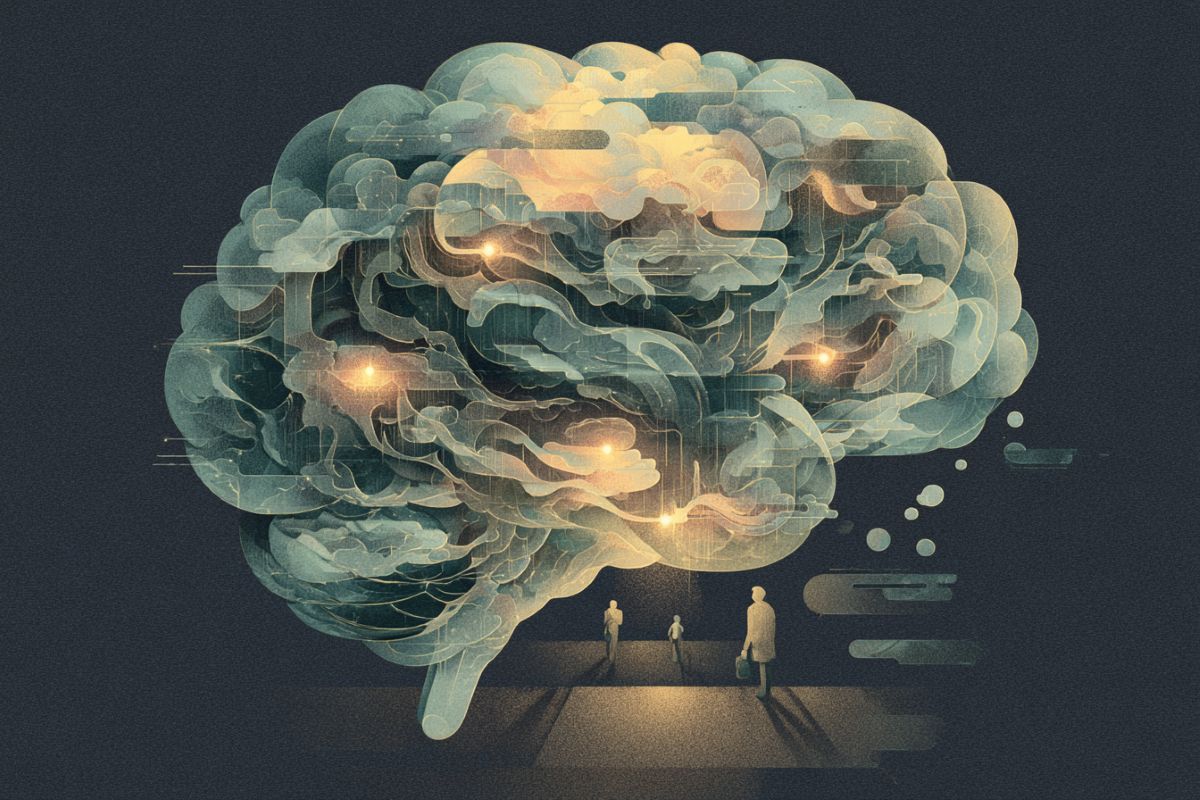Summary: A new study identifies a brain activity pattern that signals self-preoccupied thinking, a trait associated with anxiety and depression. In experiments, the pattern appeared during mental breaks and predicted when people would soon turn their thoughts inward.
Analysis of more than 1,000 brain scans confirmed that those with high self-preoccupation showed stronger fluctuations in this neural activity at rest. The findings highlight a potential biomarker for vulnerability to mental health conditions and a new target for early interventions.
Key Facts
- Neural Signature: A brain activity pattern predicts when self-focused thoughts arise.
- Mental Health Link: Stronger fluctuations in this pattern are tied to anxiety and depression risk.
- Large-Scale Validation: Results replicated in more than 1,000 participants from the Human Connectome Project.
Source: SfN
People tend to be self-preoccupied.
Self-interest is good when it ensures that one’s needs are met, but it can also be maladaptive; research shows that the tendency to self-focus promotes the occurrence of depression and anxiety and can even prolong these conditions.
Is there a neural representation of self-preoccupation? Danika Geisler and Meghan Meyer, from Colombia University, explored this question in their new Journal of Neuroscience paper.
The researchers first identified a pattern of neural activity that frequently appeared in a sample of 32 people while they took a mental break. This activity could predict whether people started thinking about themselves during the break a few seconds later.
Geisler and Meyer then turned to a broadly used publicly available database called the Human Connectome project.
From the data of 1,086 people, the researchers found that people who scored high on internalizing—a maladaptive form of self-preoccupied thinking—also moved in and out of this neural activity pattern during rest.
Thus, the tendency to engage in self-centric thinking may be reflected by fluctuating activity in distinct brain areas during rest.
Says Meyer, “We are excited to see what other aspects of everyday life our neural signature of self-preoccupation can predict. For example, Danika is working on an exciting project examining whether engaging this neural signature predicts people’s real-world social network positions.
“We are also interested in seeing if this neural signature can prospectively predict the onset of depression or anxiety; if so, intervening on this neural signature could offset the development of these mental health conditions.”
About this neuroscience and mental health research news
Author: SfN Media
Source: SfN
Contact: SfN Media – SfN
Image: The image is credited to Neuroscience News
Original Research: Closed access.
“A Neural Signature of the Bias Toward Self-Focus” by Danika Geisler et al. Journal of Neuroscience
Abstract
A Neural Signature of the Bias Toward Self-Focus
People are remarkably self-focused, disproportionately choosing to think about themselves relative to other topics.
Self-focus can be adaptive, helping individuals fulfill their needs. It can also be maladaptive, with self-focus a risk and maintenance factor for internalizing disorders like depression.
Yet, the drive to focus on the self remains to be fully characterized.
We discovered a brain pattern that when spontaneously brought online during a quick mental break predicts the desire to focus on oneself just a few seconds later.
In Study 1 (19 female and 13 male human subjects), we identified a default network neural signature from pre-trial activity that predicts multiple indicators of self-focus within our sample.
In Study 2 (588 female and 498 male human subjects), we applied our neural signature to independent resting-state data from the Human Connectome project.
We found that individuals who score high on internalizing, a form of maladaptive self-focus, similarly move in-and-out of this pattern during rest, suggesting a systematic trajectory towards self-focused thought.
This is the first work to “decode” the bias to focus on the self and paves the way towards stopping maladaptive self-focus in its course.
